Archaeology & History
In Pictures: See Inside France’s $24 Million Replica of the Submerged Cosquer Cave, Home to Hundreds of Paleolithic Artworks
Most of the rock art at the original cave has been destroyed.
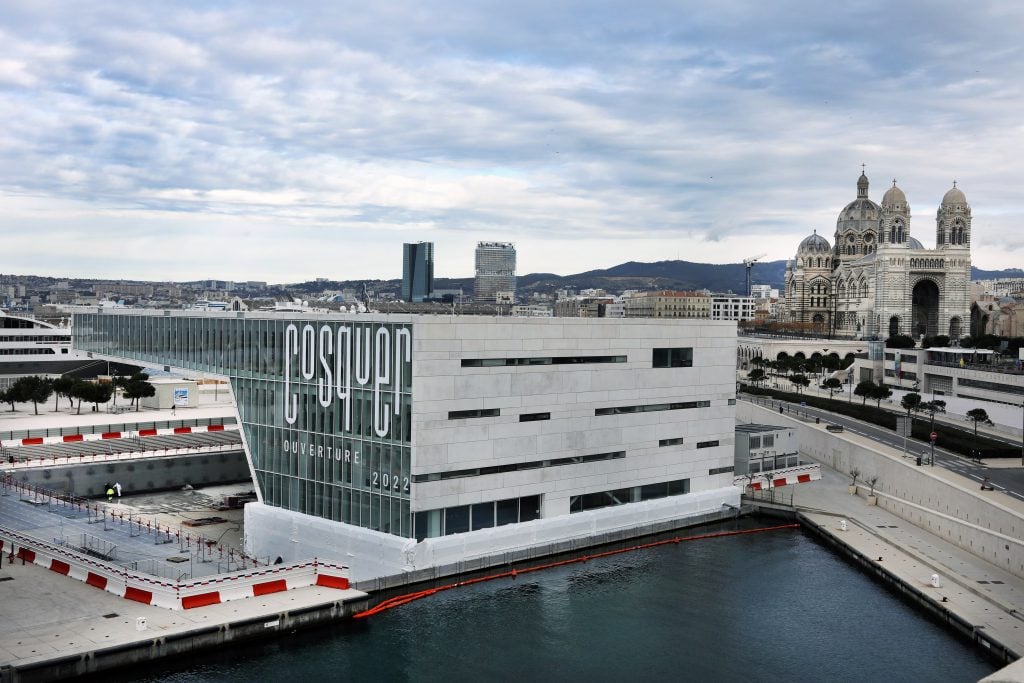
Most of the rock art at the original cave has been destroyed.

Caroline Goldstein

A new museum in France gives visitors the chance to step inside a replica of the famed Cosquer Cave, an underground grotto off the coast of Marseille that was once home to more than 500 works of prehistoric art.
Over the years, the cave has been submerged and today only around 150 carvings remain. They include works from two phases of the Upper Paleolithic Era: 27,000-year old hand stencils from the Gravettian Era; and 19,000-year-old depictions of animals including bison, ibex, and seals, which date to the Solutrean Era.
The museum, Cosquer Mediterranee, features virtual replicas of the 30,000-year-old site, as well as galleries with information about the people and animals of the Paleolithic era, based on 3D archaeological data.
Years in the making, the $24 million replica is nearly as large as the real thing, and features copies of 90 percent of the wall carvings, and all of the paintings.
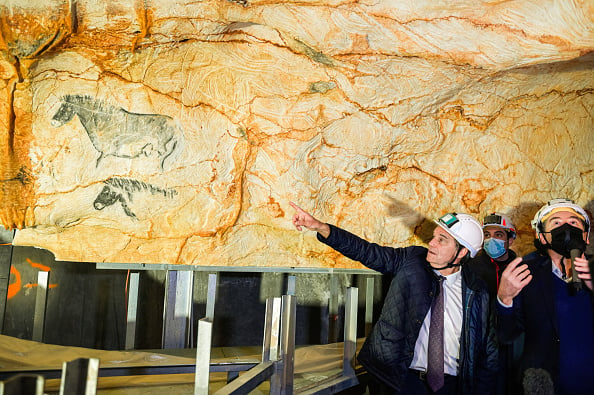
A visit with the designers pointing at the painted horses at the reproduction of Cosquer cave. Photo by Laurent Coust/SOPA Images/LightRocket via Getty Images.
Described as an “underwater Lascaux” for its similarities to the legendary cave, also in France, that’s home to more than 600 paintings. Cosquer was discovered in 1985 by diver Henri Cosquer, although the public was not informed of the astounding discovery until 1991, when three divers got lost in the underwater cavern and died.
Now, as climate change causes sea levels to rise, the site is in danger of disappearing altogether. In 2011, an almost five-inch rise in sea level at the site prompted archaeologists to hasten their research and use digital mapping to document the last corners of the grotto.
“We fantasized about bringing the cave to the surface,” diver Bertrand Chazaly, who is in charge of digitizing the cave, told AFP. “When it is finished, our virtual Cosquer cavern—which is accurate to within millimeters—will be indispensable for researchers and archaeologists who will not be able to physically get inside.”
Below, see more images of the detailed reproduction of the Cosquer Cave.
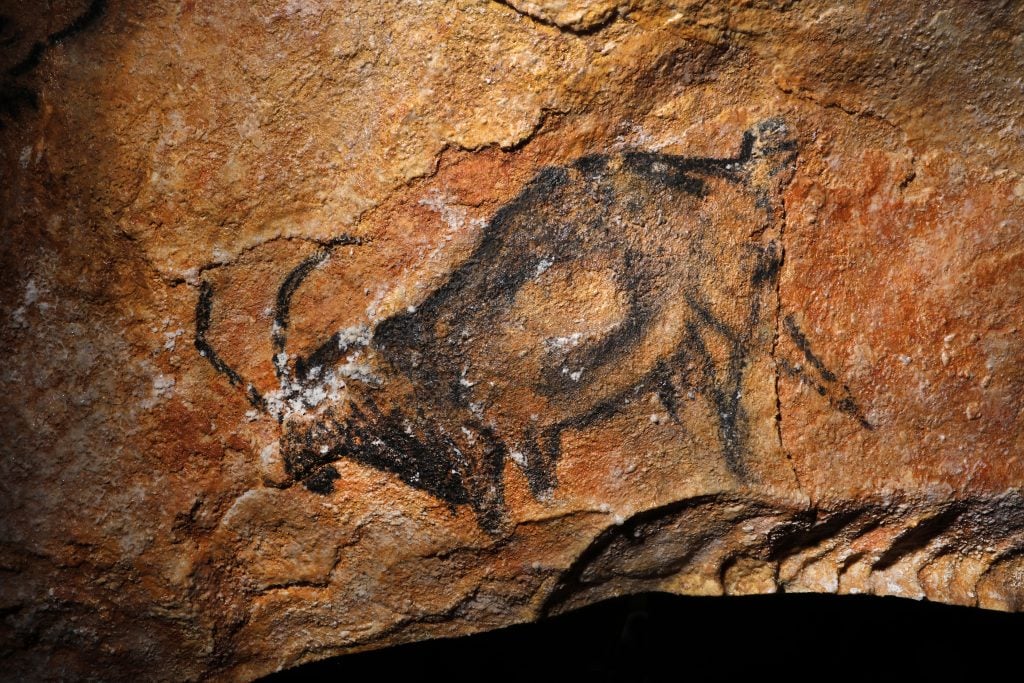
A detailed view of a work in progress of the reproduction of a wall from the Cave Cosquer at Alain Dallis workshop on June 24, 2021 in Montignac, France. Photo by Patrick Aventurier/Getty Images.
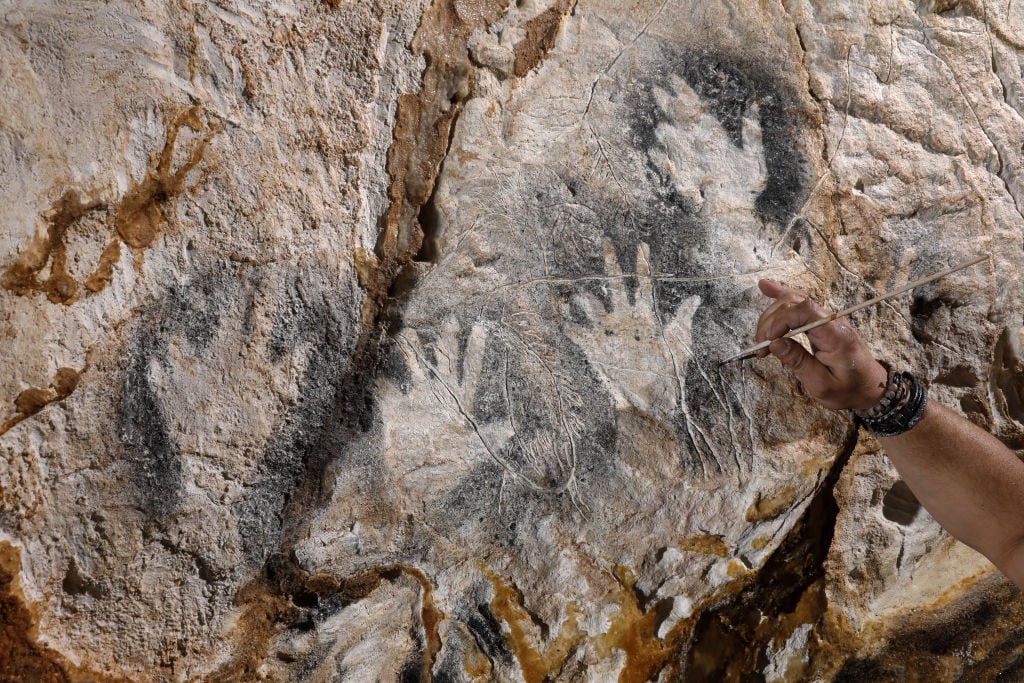
A detailed view of a work in progress of the reproduction of a wall from the Cave Cosquer. Photo by Patrick Aventurier/Getty Images.
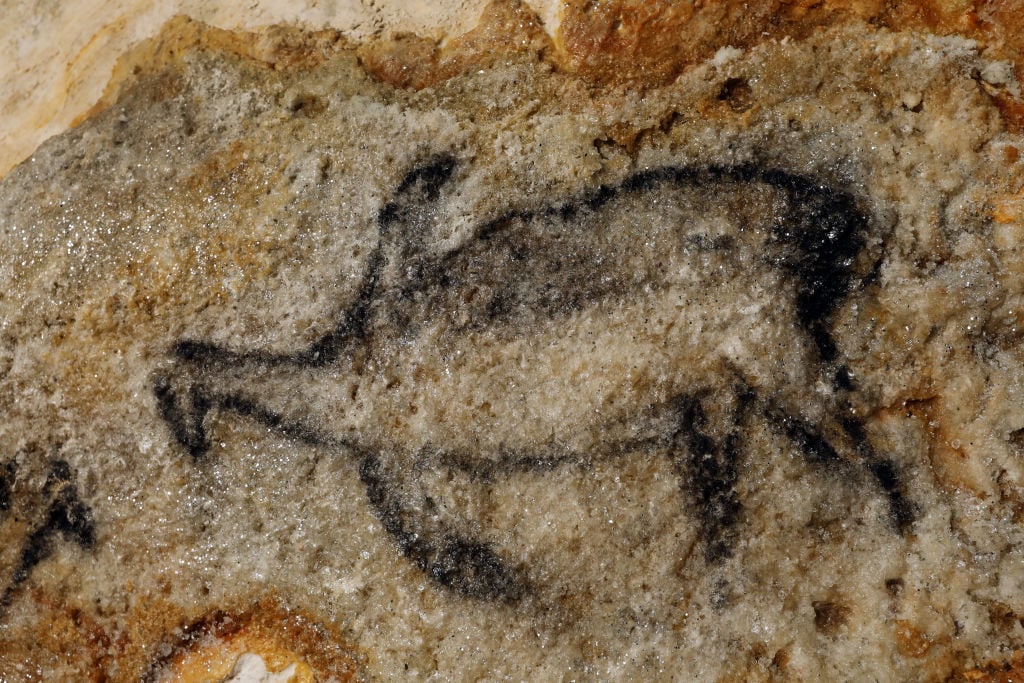
A detailed view of a work in progress of the reproduction of a wall from the Cave Cosquer. (Photo by Patrick Aventurier/Getty Images)
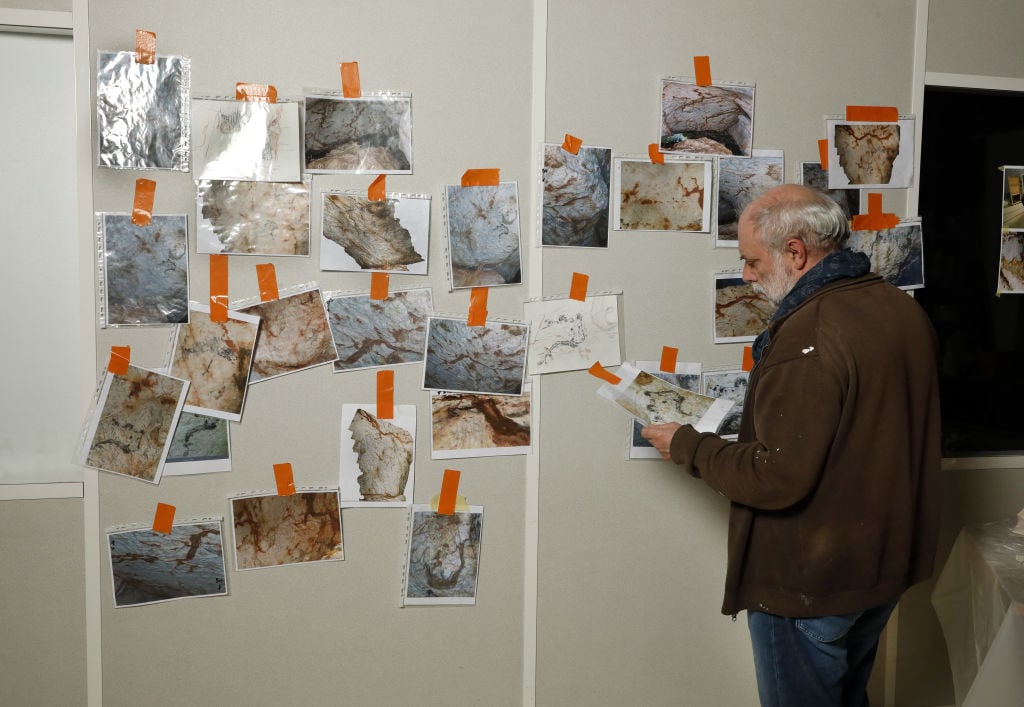
Archaeologists working on a reproduction at a workshop in Toulouse, France. (Photo by Patrick Aventurier/Getty Images)
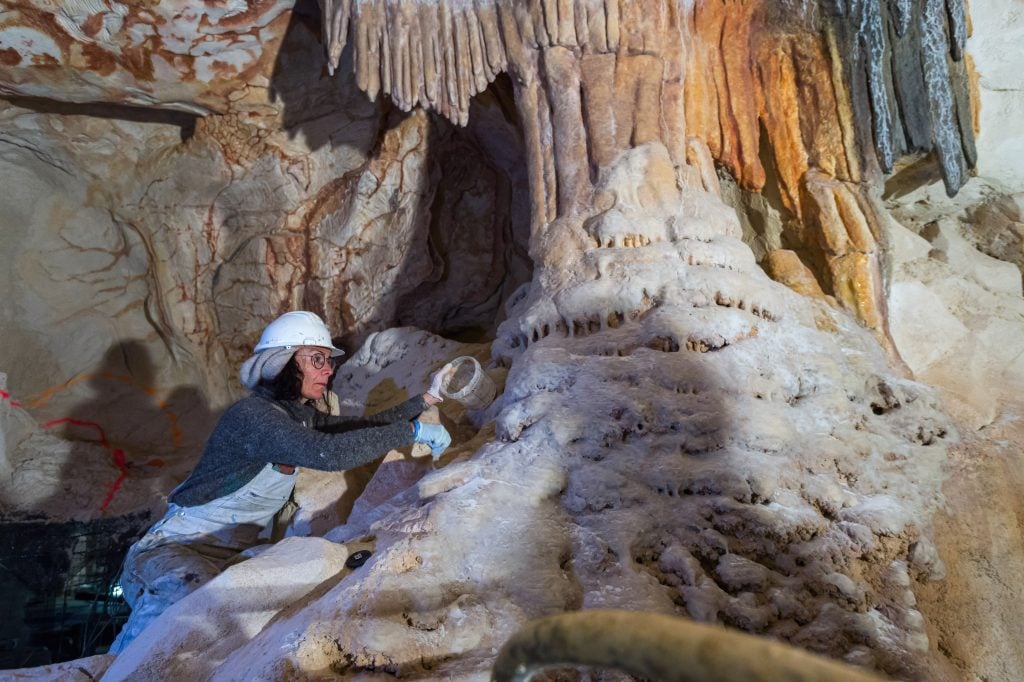
A sculptor is seen working meticulously at the Cosquer cave. (Photo by Laurent Coust/SOPA Images/LightRocket via Getty Images)
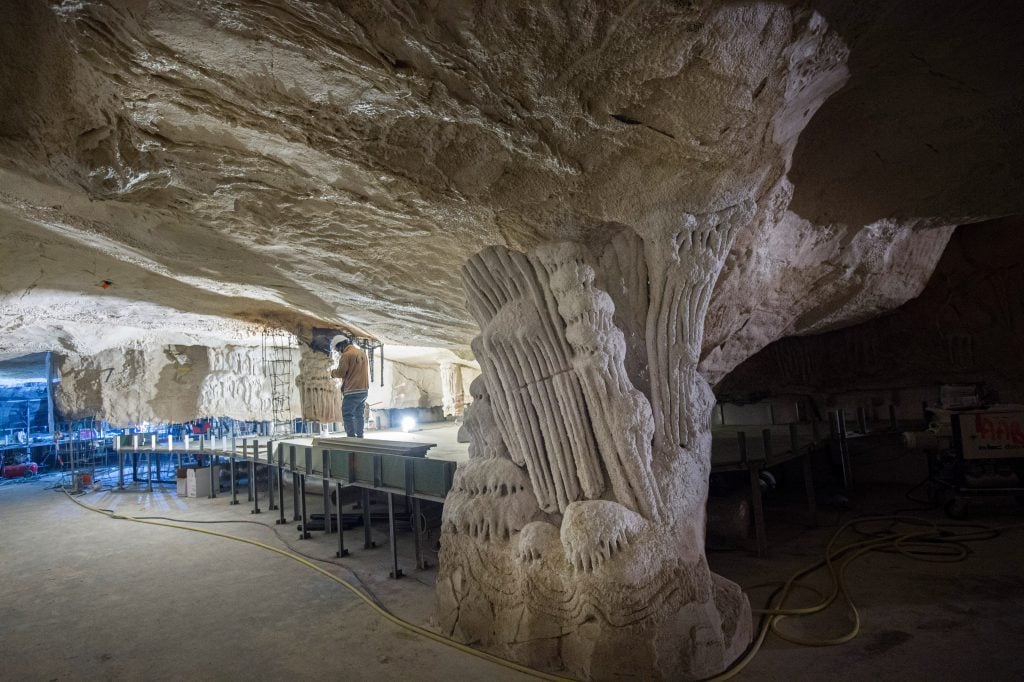
A sculptor is seen on the reproduction site of the Cosquer cave. (Photo by Laurent Coust/SOPA Images/LightRocket via Getty Images)
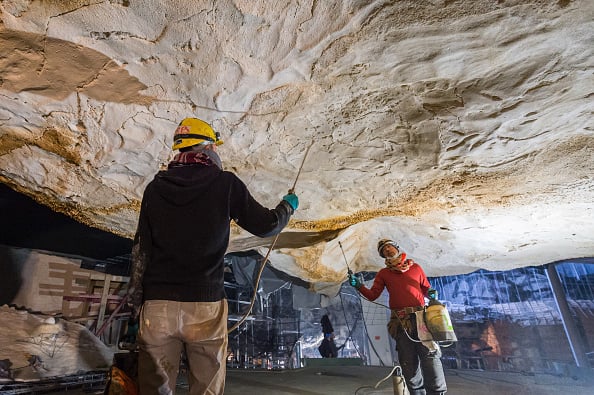
Sculptors and painters are seen painting a cave ceiling at the replica of the Cosquer cave. (Photo by Laurent Coust/SOPA Images/LightRocket via Getty Images)